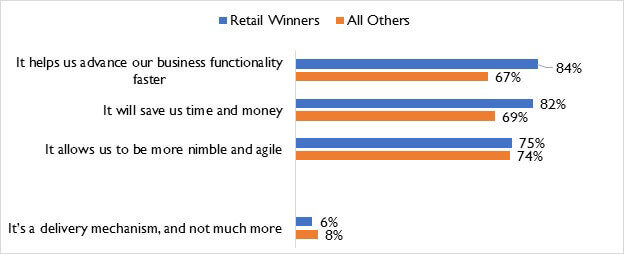Fear & Loathing On The Amazon/Whole Foods Trail
I took a call from a European business reporter on Friday, who wanted to discover whether the aggressive discounts that Amazon/Whole Foods announced were really tantamount to an announcement for the imminent demise of American supermarkets. What ensued was a discussion about how companies entering new markets or trying to win new customers have – for time immemorial – offered aggressive prices to get some attention. What’s the big deal?
The “big deal ” is the level of angst that Amazon can trigger almost at the drop of the hat among traditional retailers – and you won’t find any retail sector more traditional than grocery. Frankly, Whole Foods should have brought some of its pricing closer to market parity ages ago, but it has counted on its high-end Brand reputation to live up to the unflattering moniker, “Whole Paycheck “, for years.
This isn’t just an opinion, it’s in the numbers (below). I pulled profit & loss ratios for Whole Foods and U.S. supermarket giant Kroger from Yahoo Finance for comparative purposes, and saw just what most consumers already intuitively know:

Without getting into any of the details of each company’s profit & loss statements, there’s one unmistakable reality: Whole Foods has a better gross margin percentage to work with than Kroger, and not because it buys more efficiently than Kroger, but because it charges customers more for the product. And so, some of that difference goes to Whole Foods’ higher instore labor ratio and the rest flows to the pre-tax line. Simple.
The dynamic that allowed this to happen is profoundly straightforward: Whole Foods has been serving a lifestyle, more than merely selling food. “Food ” is highly commoditizable; “lifestyle ” is not. Whole Foods customers have self-identified as members of a lifestyle demographic, and have been more-or-less okay with paying for the privilege. Now, Amazon wants some new foot traffic, and that will inevitably change the Whole Foods experience.
But the tactic of creating hot prices on commodity items isn’t all that special or new. Retailers buy out other retailers all the time, change the signage, change the employee smocks, change the assortment, change the prices – change the entire value proposition. So again, why the panic?
Welcome to Omnichannel, Friendly Neighborhood Grocer!
Of all the retail verticals that have been slow to adopt the true meaning of “Omnichannel “, grocers have been the slowest. In our soon-to-be-released update on IoT in Retail, the situation is explained clearly: “Until very recently, FMCG retailers (principally grocers) may have believed that they were somewhat immune from the Omnichannel revolution, simply because much of their assortments are food and food related, and the vast majority of customers usually fulfill their needs in the store. But with new same-day delivery options for fresh items becoming available from players like Amazon Fresh and Peapod, and Ocado (UK), as well as growing popularity of direct delivery for meal kits (eg. Blue Apron and Sunbasket), the warning signs are there that consumer behaviors are changing quickly. “
What’s interesting (and probably pretty scary to grocers) about the Amazon acquisition of Whole Foods is that the integration of the digital and physical selling environments is not being driven by the physical stores trying to “pull ” new digital shopping capabilities into the store, but by an already-strong digital player (Amazon) “pushing ” the digital domain into the store. In other words, there is a whole lot less trial-and-error that has happen to integrate some of the Amazon experience into a Whole Foods store.
So you’ll see not only more ways for shoppers to use the Amazon app while in the store aisle, but also Amazon lockers for Prime customers to pick up non-Whole Foods purchases, integration of Amazon Prime advantages at the point of sale – just as Amazon is already doing it its physical bookstores, and some kind of integration with Amazon Echo for customer order generation. Just as milkshake machine salesman Ray Kroc said when he bought out the McDonald brothers and took over the famed fast food brand, “boom like that! “
In short, Amazon/Whole Foods will quickly redefine what it means to be a grocer in an Omnichannel selling environment. Personally, I think that’s great – it’s the 21st Century, and it’s time for fast-moving-consumer-goods (FMCG) retailers to get with the program. But it won’t be easy; FMCG retailers have the most brutal financial model in the entire retail industry, and most have very little to spend on updating their technology portfolios. Amazon doesn’t have that problem – and as the numbers above show, neither really did Whole Foods. And now, while Whole Foods gives away some of that gross margin % advantage to build new traffic, Amazon can do what it has done with its own retail operations for years – subsidize “low prices ” with a very healthy web services business.
And that’s “the big deal “, why there’s fear and loathing on the Amazon/Whole Foods trail.
